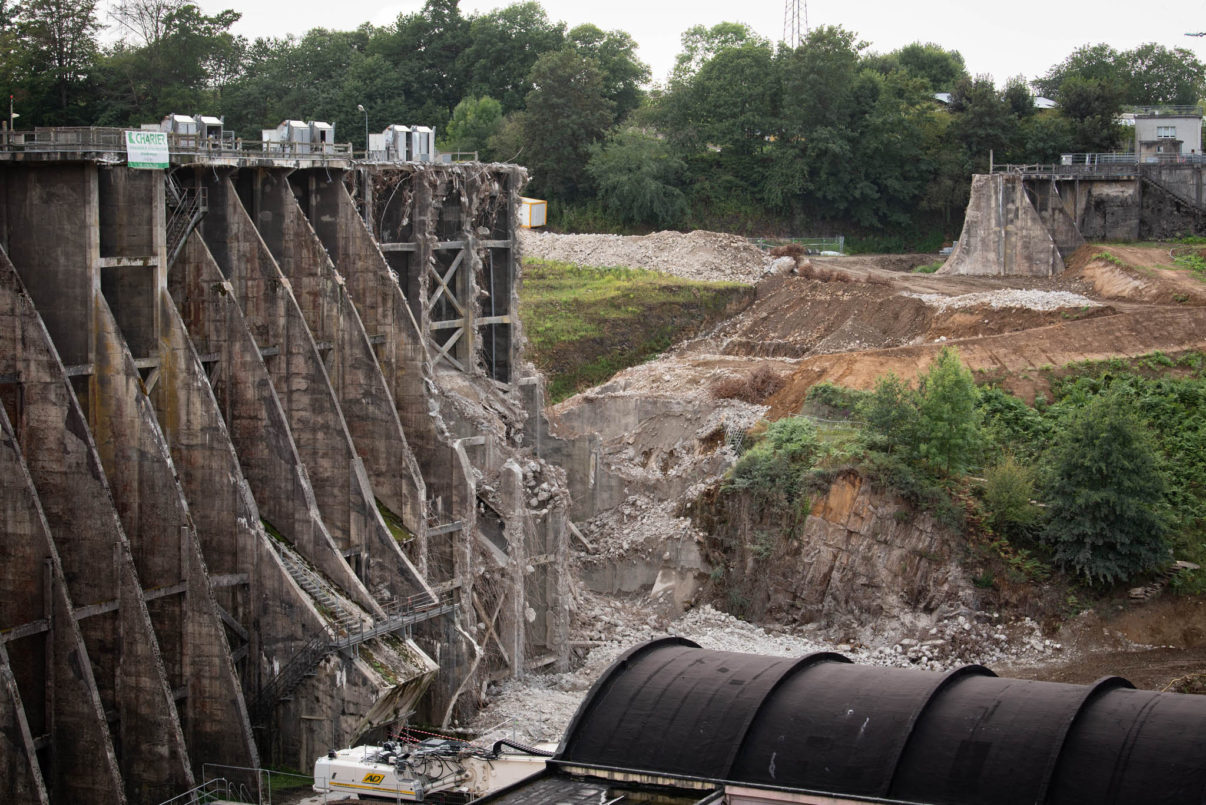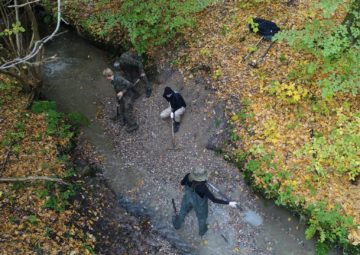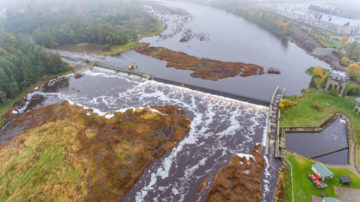Thousands of dams and other man-made obstacles fragment the world’s waterways. Their removal, which is now happening at an increasing rate in many European countries, is the best way to breathe new life into rivers and local economies.

Better connected
Today European waterways are choked with countless dams and other barriers. Many of these structures, some hundreds of years old, provide irrigation, energy and other benefits. Many others are abandoned and obsolete. Regardless of usefulness, the presence of these barriers has a seriously detrimental impact on fish, other wildlife and people.
“With wild nature along European rivers in long-term decline, the removal of dams has already proven to be the most environmentally efficient and cost-effective measure for river restoration,” says Rewilding Europe Managing Director Frans Schepers.
Practical measures
Across all of Rewilding Europe’s operational areas we are now working to create space where wild nature can reshape and enhance ecosystems. In addition to letting natural processes such as forest regeneration, flooding and natural grazing impact landscapes, this also involves restoring rivers to their free-flowing state, or as close to this state as possible.

In 2018, Rewilding Europe with it’s local partners Rewilding Sweden and Rewilding Oder Delta conducted river restoration in two of its operational areas: Swedish Lapland and the Oder Delta. This work included the removal of log dams that are a legacy of the forestry industry (in Swedish Lapland), as well as the creation of spawning grounds (in both areas). Rewilding Europe is also involved in the upcoming removal of dams on the Kagach and Kogilnik Rivers in the Ukrainian Danube Delta with it’s local partner Rewilding Ukraine.
“Removing dams is one of the most satisfying forms of nature restoration,” says Rewilding Ukraine team leader Mykhailo Nesterenko. “Rivers are very dynamic and resilient systems. There are stories where old barriers have been removed and fish returned within just one day.”
Scaling up
Dam removal gained some momentum in Europe after the European Union (EU) adopted the Water Framework Directive (WFD) in 2000, which requires member states to improve the ecological protection of rivers and lakes. While some European countries – most notably those on the Balkan Peninsula – are currently on a dam-building spree, dam deconstruction is now ramping up in many others.
One of the latest examples of such deconstruction is on the Sélune River in Normandy, France. With two obsolete dams – the Vezins and La Roche Qui Boit – currently being removed, 90 kilometres of waterway will soon be opened up, allowing Atlantic salmon to migrate once again to their ancient spawning grounds. With barrier removal increasing juvenile salmon habitat threefold, it is hoped that the number of adult salmon returning to the river will increase by more than 1400.
Part of Dam Removal Europe’s fifth international seminar, which is taking place between September 24 and 26, will involve checking on the progress of deconstruction at the Vezins Dam.
Economic drivers
Rewilding Europe joined Dam Removal Europe (DRE) – a European-wide coalition of organisations – in 2018. Through this partnership with WWF, the World Fish Migration Foundation, The Rivers Trust and European Rivers Network France, we continue our efforts to promote and accelerate dam removal across the continent.
Different DRE partners have different roles. In addition to its river restoration efforts in the field, Rewilding Europe is also exploring scalable business models that can make dam removal – which is often cheaper than renovation – attractive for European dam owners.

Such models are typically based on the financial valuation of goods that are literally blocked by the dams, such as migratory fish, water quality and sediment that is needed downstream. In addition, energy companies are often amenable to agreements which open up catchment areas while they switch to fewer but more efficient hydropower dams.
“Dams block fish migration, stop the flow of sediment and nutrients, and undermine the value of rivers to people and nature,” says Frans Schepers. “A future where the majority of Europe’s waterways flow freely should be our goal. Practical, profitable business models can help us realise that goal.”
Want to know more?
Much of this article was taken from a longer story entitled “Breaking Barriers”, which featured in Rewilding Europe’s Annual Review 2018. We invite you to view this beautiful 88-page publication, which contains a wide range of insightful feature stories, stunning photography and illustrative infographics, showcasing the progress made in our own rewilding areas and the growth of Europe’s rewilding movement in 2018.
A free hard copy of the Rewilding Europe Annual Review 2018 can be ordered below (regrettably we are unable to cover shipping costs).
